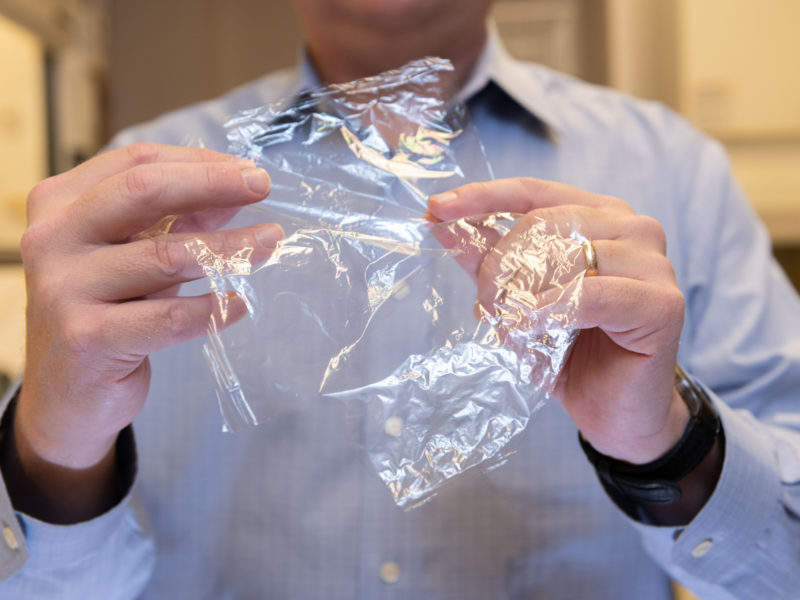
Researchers at Georgia Institute of Technology in the US have developed a flexible film made from a new material derived from crab shells and tree fibres as a potential alternative to flexible plastic packaging.
The research team have created the new material by spraying multiple layers of chitin from crab shells and cellulose from trees to develop a material that could potentially be an alternative to flexible plastic packaging.
The method used to create the film involves suspension of cellulose and chitin nanofibers in water and spraying them onto a surface in alternating layers.
The researchers have noted that after allowing these layers to fully dry, the material becomes flexible, strong, transparent and compostable.
Georgia Tech School of Chemical and Biomolecular Engineering professor Carson Meredith said: “Our material showed up to a 67% reduction in oxygen permeability over some forms of PET, which means it could, in theory, keep foods fresher longer.”
The material has been developed while the researchers were studying chitin for an unrelated project and wanted to see if it could be used in food packaging.

US Tariffs are shifting - will you react or anticipate?
Don’t let policy changes catch you off guard. Stay proactive with real-time data and expert analysis.
By GlobalDataMeredith added: “We recognised that because the chitin nanofibres are positively charged, and the cellulose nanocrystals are negatively charged, they might work well as alternating layers in coatings because they would form a nice interface between them.”
The team noted that the flexible film’s crystalline structure serves as a better gas barrier preventing the entry of oxygen into the product than conventional plastic packaging.
Meredith further stated: “It’s difficult for a gas molecule to penetrate a solid crystal, because it has to disrupt the crystal structure.
“Something like PET, on the other hand, has a significant amount of amorphous or non-crystalline content, so there are more paths easier for a small gas molecule to find its way through.”
The study determined that there is enough supply of chitin-rich by-products from the shellfish food industry to develop the new films on a larger scale to replace flexible packaging.
However, further studies are needed to improve the material’s ability to block water vapour.
Meredith also called for the development of a manufacturing process that maximises economy of scale to present the new material as a cost-effective alternative.



